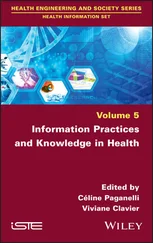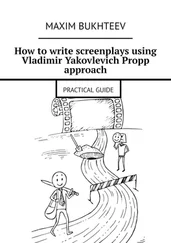1 COVER
2 TITLE PAGE PRACTITIONER'S GUIDE TO USING RESEARCH FOR EVIDENCE-INFORMED PRACTICE THIRD EDITION Allen Rubin and Jennifer Bellamy
3 COPYRIGHT
4 PREFACE Organization and Special Features Significant Additions to This Edition
5 ACKNOWLEDGEMENTS
6 ABOUT THE AUTHORS
7 ABOUT THE COMPANION WEBSITE
8 PART 1: OVERVIEW OF EVIDENCE-INFORMED PRACTICE 1 Introduction to Evidence-Informed Practice (EIP) 1.1 Emergence of EIP 1.2 Defining EIP 1.3 Types of EIP Questions 1.4 EIP Practice Regarding Policy and Social Justice 1.5 EIP and Black Lives Matter 1.6 Developing an EIP Practice Process Outlook 1.7 EIP as a Client-Centered, Compassionate Means, Not an End unto Itself 1.8 EIP and Professional Ethics Key Chapter Concepts Additional Reading 2 Steps in the EIP Process 2.1 Step 1: Question Formulation 2.2 Step 2: Evidence Search 2.3 Step 3: Critically Appraising Studies and Reviews 2.4 Step 4: Selecting and Implementing the Intervention 2.5 Step 5: Monitor Client Progress 2.6 Feasibility Constraints 2.7 But What about the Dodo Bird Verdict? Key Chapter Concepts Additional Reading 3 Research Hierarchies: Which Types of Research Are Best for Which Questions? 3.1 More than One Type of Hierarchy for More than One Type of EIP Question 3.2 Qualitative and Quantitative Studies 3.3 Which Types of Research Designs Apply to Which Types of EIP Questions? Key Chapter Concepts Additional Reading
9 PART 2: CRITICALLY APPRAISING STUDIES FOR EIP QUESTIONS ABOUT INTERVENTION EFFECTIVENESS 4 Criteria for Inferring Effectiveness: How Do We Know What Works? 4.1 Internal Validity 4.2 Measurement Issues 4.3 Statistical Chance 4.4 External Validity 4.5 Synopses of Fictitious Research Studies Key Chapter Concepts Exercise for Critically Appraising Published Articles Additional Reading 5 Critically Appraising Experiments 5.1 Classic Pretest-Posttest Control Group Design 5.2 Posttest-Only Control Group Design 5.3 Solomon Four-Group Design 5.4 Alternative Treatment Designs 5.5 Dismantling Designs 5.6 Placebo Control Group Designs 5.7 Experimental Demand and Experimenter Expectancies 5.8 Obtrusive Versus Unobtrusive Observation 5.9 Compensatory Equalization and Compensatory Rivalry 5.10 Resentful Demoralization 5.11 Treatment Diffusion 5.12 Treatment Fidelity 5.13 Practitioner Equivalence 5.14 Differential Attrition 5.15 Synopses of Research Studies Key Chapter Concepts Exercise for Critically Appraising Published Articles Additional Reading 6 Critically Appraising Quasi-Experiments: Nonequivalent Comparison Groups Designs 6.1 Nonequivalent Comparison Groups Designs 6.2 Additional Logical Arrangements to Control for Potential Selectivity Biases 6.3 Statistical Controls for Potential Selectivity Biases 6.4 Creating Matched Comparison Groups Using Propensity Score Matching 6.5 Pilot Studies 6.6 Synopses of Research Studies Key Chapter Concepts Exercise for Critically Appraising Published Articles Additional Reading 7 Critically Appraising Quasi-Experiments: Time-Series Designs and Single-Case Designs 7.1 Simple Time-Series Designs 7.2 Multiple Time-Series Designs 7.3 Single-Case Designs 7.4 Synopses of Research Studies Key Chapter Concepts Exercise for Critically Appraising Published Articles Additional Reading 8 Critically Appraising Systematic Reviews and Meta-Analyses 8.1 Advantages of Systematic Reviews and Meta-Analyses 8.2 Risks in Relying Exclusively on Systematic Reviews and Meta-Analyses 8.3 Where to Start 8.4 What to Look for When Critically Appraising Systematic Reviews 8.5 What Distinguishes a Systematic Review from Other Types of Reviews? 8.6 What to Look for When Critically Appraising Meta-Analyses 8.7 Synopses of Research Studies Key Chapter Concepts Exercise for Critically Appraising Published Articles Additional Reading
10 PART 3: CRITICALLY APPRAISING STUDIES FOR ALTERNATIVE EIP QUESTIONS 9 Critically Appraising Nonexperimental Quantitative Studies 9.1 Surveys 9.2 Cross-Sectional and Longitudinal Studies 9.3 Case-Control Studies 9.4 Synopses of Research Studies Key Chapter Concepts Exercise for Critically Appraising Published Articles Additional Reading 10 Critically Appraising Qualitative Studies 10.1 Qualitative Observation 10.2 Qualitative Interviewing 10.3 Other Qualitative Methodologies 10.4 Qualitative Sampling 10.5 Grounded Theory 10.6 Alternatives to Grounded Theory 10.7 Frameworks for Appraising Qualitative Studies 10.8 Mixed Model and Mixed Methods Studies 10.9 Synopses of Research Studies Key Chapter Concepts Exercise for Critically Appraising Published Articles Additional Reading
11 PART 4: ASSESSMENT AND MONITORING IN EVIDENCE-INFORMED PRACTICE 11 Critically Appraising, Selecting, and Constructing Assessment Instruments 11.1 Reliability 11.2 Validity 11.3 Feasibility 11.4 Sample Characteristics 11.5 Locating Assessment Instruments 11.6 Constructing Assessment Instruments 11.7 Synopses of Research Studies Key Chapter Concepts Exercise for Critically Appraising Published Articles Additional Reading 12 Monitoring Client Progress 12.1 A Practitioner-Friendly Single-Case Design 12.2 Using Within-Group Effect-Size Benchmarks Key Chapter Concepts Additional Reading
12 PART 5: ADDITIONAL ASPECTS OF EVIDENCE-INFORMED PRACTICE 13 Appraising and Conducting Data Analyses in EIP 13.1 Introduction 13.2 Ruling Out Statistical Chance 13.3 What Else Do You Need to Know? 13.4 The 05 Cutoff Point Is Not Sacred! 13.5 What Else Do You Need to Know? 13.6 Calculating Within-Group Effect Sizes and Using Benchmarks 13.7 Conclusion Key Chapter Concepts Additional Reading 14 Critically Appraising Social Justice Research Studies 14.1 Introduction 14.2 Evidence-Informed Social Action 14.3 What Type of Evidence? 14.4 Participatory Action Research (PAR) 14.5 Illustrations of Other Types of Social Justice Research 14.6 Conclusion Key Chapter Concepts Additional Reading Note
13 GLOSSARY
14 REFERENCES
15 INDEX
16 END USER LICENSE AGREEMENT
1 Chapter 2 Table 2.1 The PICO Framework Table 2.2 Web Search Example Using the Term EMDR at http://Google.com Table 2.3 Internet Sites for Reviews and Practice Guidelines
2 Chapter 3 Table 3.1 Evidentiary Hierarchy for EIP Questions about Effectiveness Table 3.2 Matrix of Research Designs by Research Questions
3 Chapter 6Table 6.1 Guide for Appraising Studies Using a Nonequivalent Comparison Gro...Table 6.2 Outcome Data for a Fictitious Evaluation of Two Dropout Preventio...Table 6.3 Outcome Data for a Fictitious Evaluation of Two Dropout Preventio...Table 6.4 Mean Outcome Scores on a Family Risk Scale for a Fictitious Evalu...Table 6.5 Mean Pretest and Posttest Scores on a Family Risk Scale for a Fic...Table 6.6 Participants' Mean Pretest and Posttest Scores before and after R...
4 Chapter 7Table 7.1 Four Alternative Data Patterns of Incidents of Police Brutality i...Table 7.2 Data Points for a Comparison Group over the Same Baseline and Int...Table 7.3 Questions for Appraising Studies Using Time-Series Designs
5 Chapter 8Table 8.1 Questions to Ask When Critically Appraising Systematic Reviews an...Table 8.2 Interpretive Guidelines for d -Indexes and CorrelationsTable 8.3 Types of Questions that Systematic Reviews and Meta-Analyses Seek...
6 Chapter 9Table 9.1 Questions to Ask When Critically Appraising Surveys
7 Chapter 10Table 10.1 Criteria Emphasized by Alternative Frameworks for Appraising Qua...
8 Chapter 11Table 11.1 Internal Consistency ReliabilityTable 11.2 Test–Retest ReliabilityTable 11.3 Circle the Number that Best Describes the Child's Observed Behav...
9 Chapter 12Table 12.1 An Individualized Daily Rating Scale for Depressed MoodTable 12.2 Frequency Recording TemplateTable 12.3 Duration Recording Template
10 Chapter 13Table 13.1 Possible Random Assignment Outcomes of Four Research Participant...Table 13.2 Possible Random Assignment Outcomes of Six Research Participants...Table 13.3 Some Commonly Used Tests of Statistical SignificanceTable 13.4 Within-Group Aggregate Effect-Size of Trauma Symptoms by Treatme...
Читать дальше












